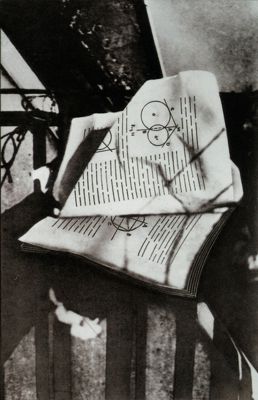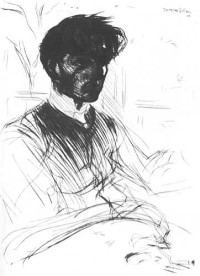One of Duchamp’s last specific comments on geometry was his Unhappy Readymade of 1919. At the time of the marriage of his sister, Suzanne, to Jean Crotti, the artist sent instructions to the couple in Paris to suspend a geometry book by strings on their balcony. Duchamp later described the intended results:
“The wind had to go through the book, choose its own problems, turn and tear out the pages… It amused me to bring the idea of happy and unhappy into readymades, and then the rain, the wind, the pages flying, it was an amusing idea.”(1)

In the Unhappy Readymade the more familiar irreverent Duchamp appears to have replaced once again the scholar revealed in the A l’infinitif notes. Duchamp’s days of concentrated geometric scholarship were largely over by the time he left France in 1915 and were certainly so by 1919. Still, it is not the new geometries that the Unhappy Readymade subverts, for the geometry text hung on the balcony deals with Euclidean plane geometry. In fact, the result of action by the wind and rain would be non-Euclidean: the inevitable buckling and tearing of the pages would produce non-Euclidean deformations of the Euclidean diagrams in the text.

